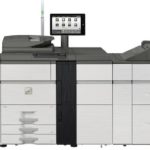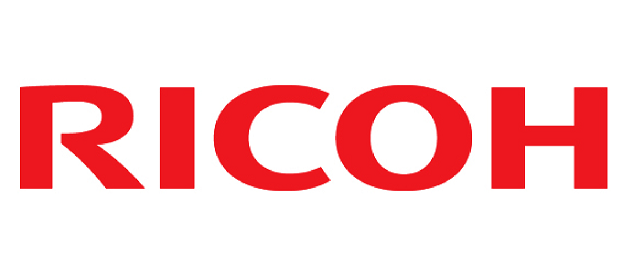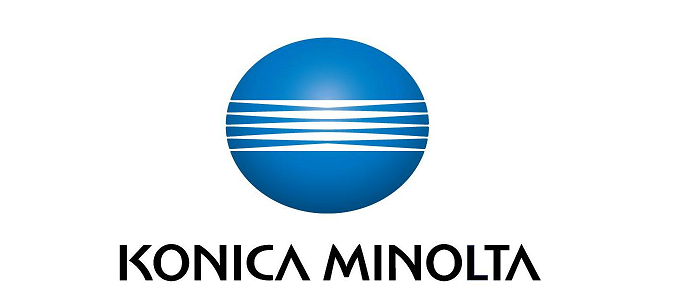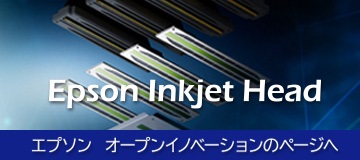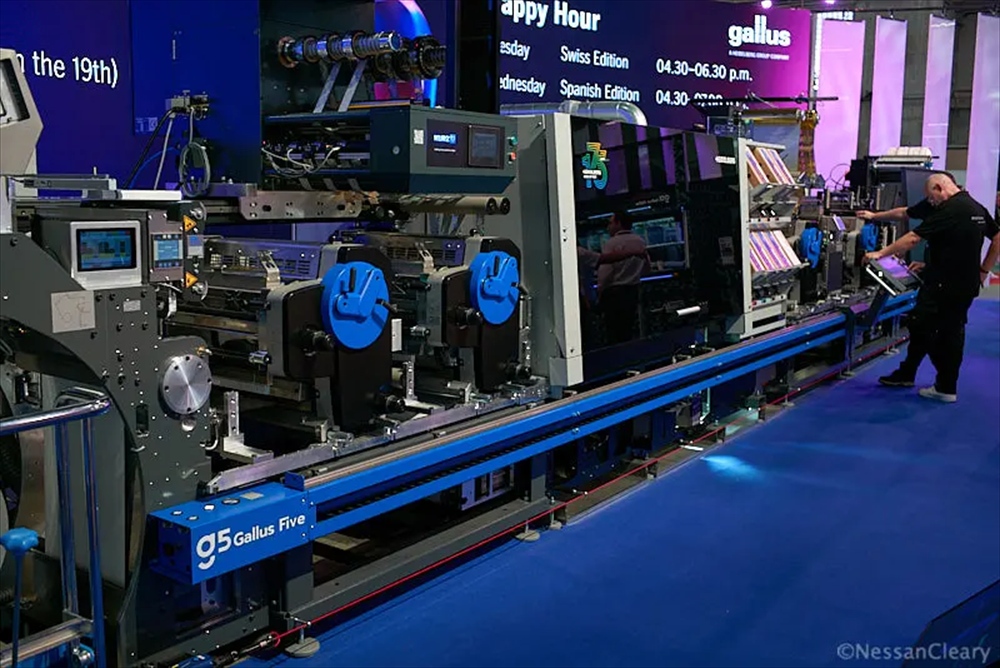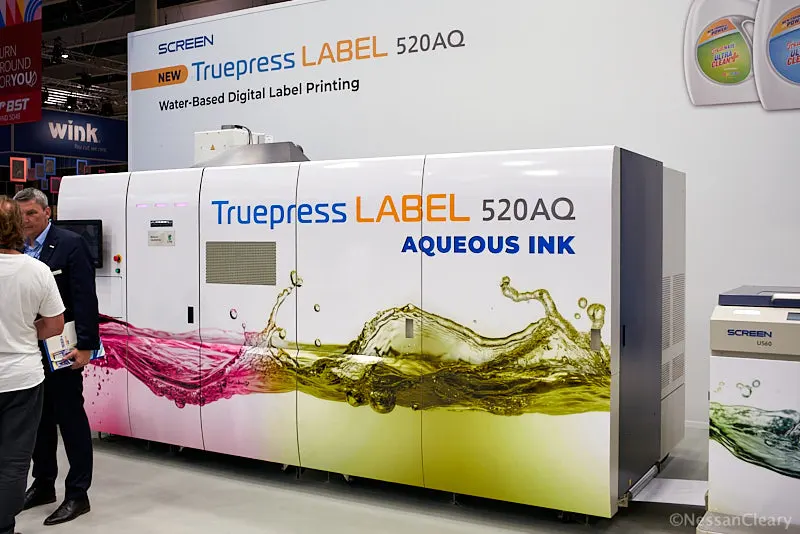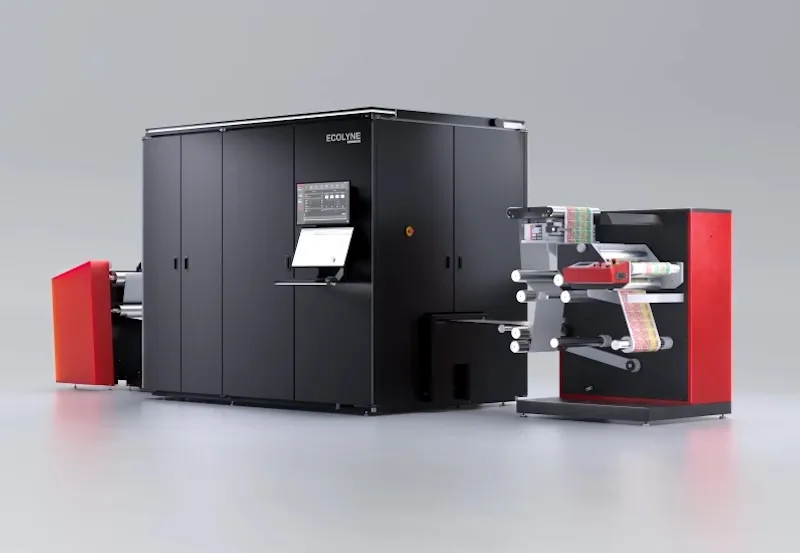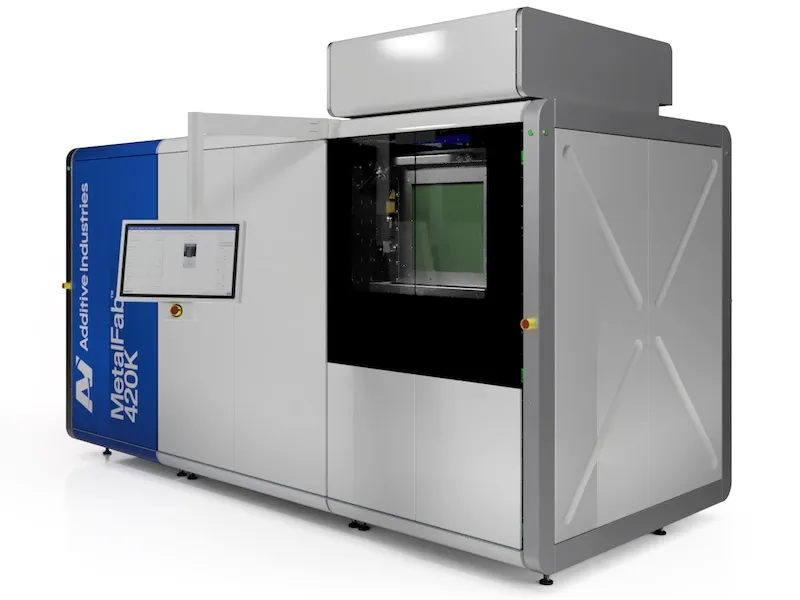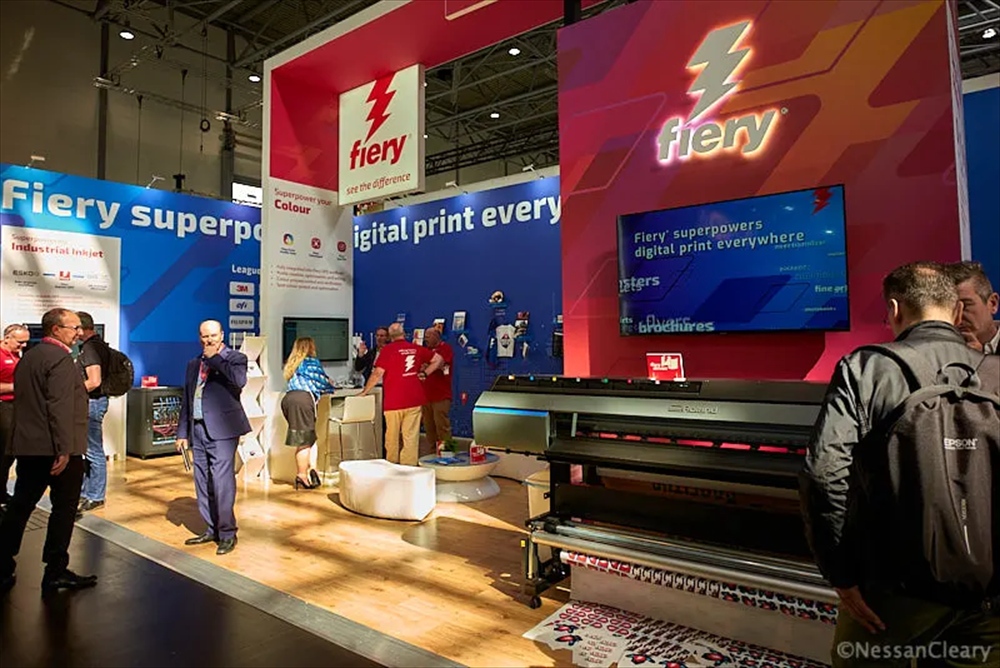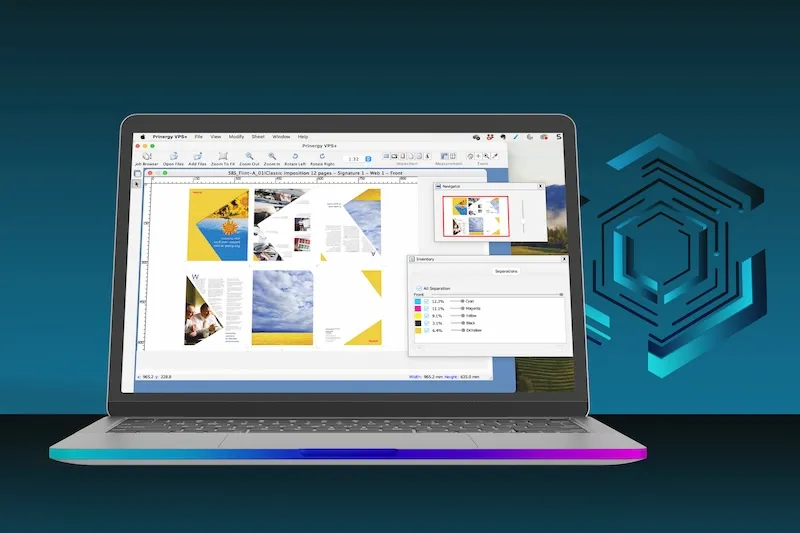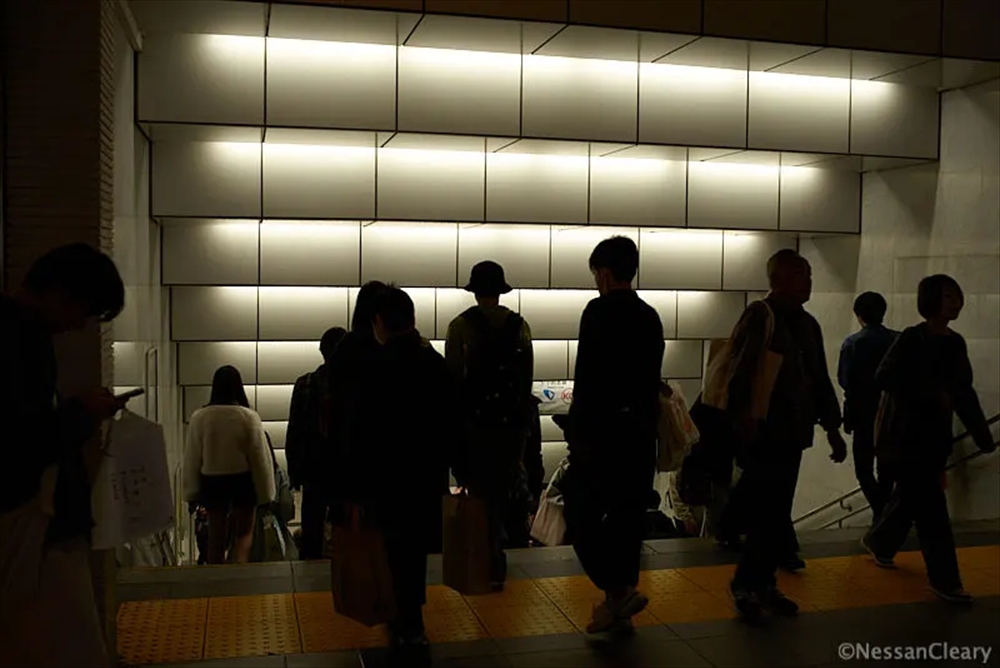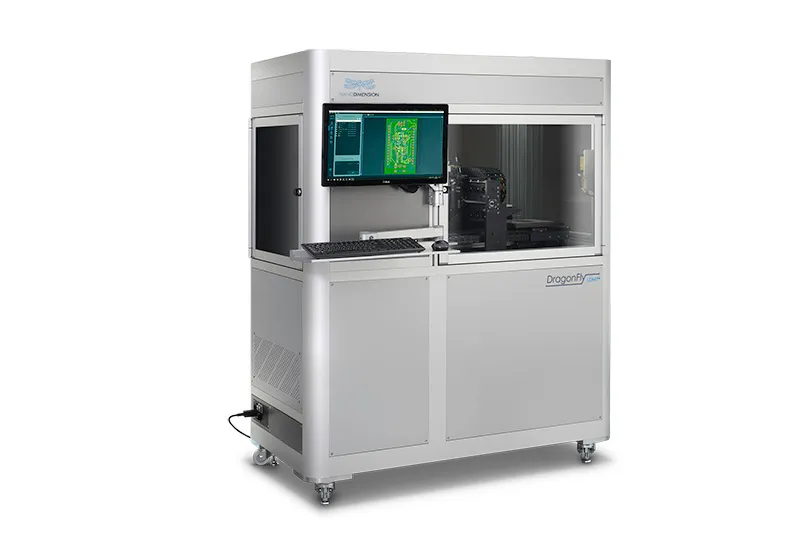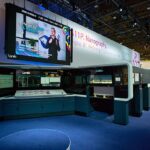- 2020-1-13
- Nessan Cleary 記事紹介
休日が終わったので、仕事に戻りましょう。過去10年間で膨大な数の変化が見られましたが、2020というフレーズは正常な視力も意味するため、次の数年間で発生する可能性のあるいくつかの傾向を評価して、1年を始めるのが適切と思われます。
■ 大野註:視力の表現は日本と英語圏では異なるため、「視力は1.0ですね」と言いたい場合、“Your visual acuity is 1.0.”と言っても、多くの場合通用しません。英語では「視力1.0」に相当する人を「正常視力」の人と設定し、この視力を 20/20 (twenty-twenty) vision と呼びます。これは「視力1.0の人が20フィートの距離から認識出来るものを、同じ20フィートの距離で認識出来る」ということを意味しています。この原理で 20/40 vision は「視力1.0の人が40フィートの距離から認識出来るものを、20フィートの距離でしか認識できない」を意味し、日本で言う「視力0.5」に相当します。この逆に、20/10 vision は「視力2.0」になります。つまり、最初の20を後ろの数字で割ったものが日本の視力に相当するのです。従って「あなたの視力は0.5ですね。」と言いたい場合は“You have 20/40 vision.”と言えば良いのです。
Now that the holidays are over, it’s time to get back to work. We’ve seen an enormous number of changes over the past decade, and since the phrase 2020 also signifies perfect eyesight, it seems appropriate to kick off the year with an assessment of some of the trends that we can expect to encounter over the next few years.
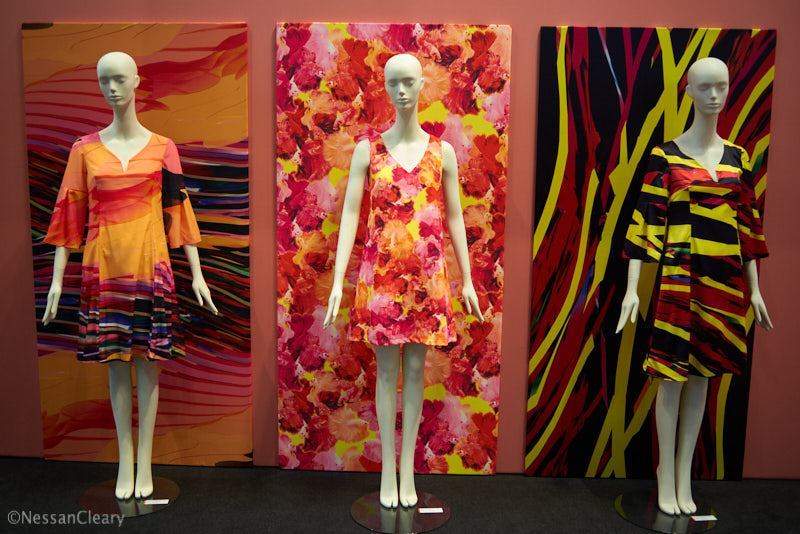
過去 10年間は、印刷に携わる私たちにとって4つの大きなトレンドを示しました。「インクジェットの成長」、「産業印刷の出現」、「積層造形の発展」、「クラウドコンピューティングの一般的な採用」です。当然、これらは継続しますし、少なくとも印刷業界の視点からは、次の 10年を支配することになるでしょう。
The past decade has shown four big trends for those of us involved in printing – the growth of inkjet, the emergence of industrial printing, the development of additive manufacturing and a general embrace of cloud computing – and naturally these will continue and, most likely, define the next decade, at least in terms of the printing industry.
もちろん、インクジェット印刷は 2010年よりずっと前から存在していましたが、この 10年間でインクジェットの普及が進み、シングルパスインクジェットプレスが商業印刷の一部として受け入れられるようになりました。同様に、ほとんどのラベルコンバーターは現在、ショートランデジタル生産の市場を見ており、この 10年間で、市場に出始めたばかりの段ボール部門をターゲットにしたいくつかの印刷機で、インクジェットが徐々に受け入れられるようになりました。これが続くことは明らかであり、インクジェットが他の印刷技術にダメージを与えるために印刷全体の中のより大きな部分を占めていくことは明らかです。
Of course, inkjet printing existed long before 2010 but this decade has seen the widespread adoption of inkjet, with single pass inkjet presses now an accepted part of commercial printing. Equally, most label converters now see a market for short run digital production and in this decade we have seen a gradual acceptance of inkjet in packaging with several presses targeting the corrugated sector just starting to hit the market. It’s obvious that this will continue and that inkjet will take a bigger slice of the printing pie, to the detriment of other print technologies.
しかし、この新しい(次の) 10年間で最も重要なトレンドは産業印刷の成長であり、多くの人々が印刷について考える方法を変える可能性があると思います。他の印刷技術も含まれてはいますが、産業用印刷のほとんどはインクジェット技術に関するものです。フロアボードからTシャツまですべてをカバーするものなので「産業用印刷という用語の意味」を正確に特定するのは困難です。共通の特徴は、さまざまな素材に印刷できること、そしてますますさまざまな形状に印刷できることです。これは、特にパッケージングへの印刷向けに、インクジェット、特にインクの開発を推進しています。しかし、これはファッションなど、他のあらゆる分野にも影響を及ぼしています。これを疑う場合は、若い世代がパーソナライズされた服の採用を先導しているので、ティーンエイジャーに聞いてください。10年前、私たちは衣服の生産について(プリントと絡めて議論するなんて)考えたことも無かったでしょう。
But I think that the most significant trend over this new decade will be the growth of industrial printing, which has the potential to change the way that many people think about printing. Industrial printing is mostly about inkjet technology, though there are other print technologies involved. It’s hard to pin down just what we mean by the term industrial printing, which can include everything from floorboards to t-shirts. The common denominator is the ability to print to different substrates and, increasingly, different shapes. This is driving the development of inkjet, and particularly inks, right across the printing spectrum, especially for printing to packaging. But this is also affecting all sorts of other sectors, such as fashion. If you doubt this, then just ask a teenager, because the younger generation are spearheading the adoption of personalised clothing. Ten years ago none of us in printing thought that we were going to be discussing garment production!
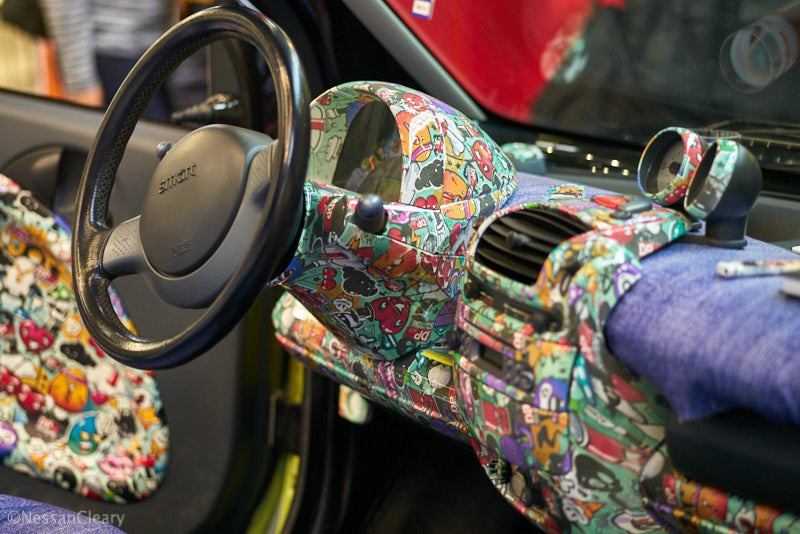
Print technology has allowed many of the interior panels and surrounds of this Smart Car to be customised.
印刷技術により、このスマートカーの多くのインテリアパネルとサラウンドをカスタマイズできます。
産業のテーマを続けると、この10年間で 3Dプリントの飛躍的な進歩が見られました。10年前、ほとんどの 3Dプリンターベンダーは消費者市場を追いかけていましたが、そのバブルは確実に崩壊しました。代わりに、多くの産業で積層造形が受け入れられるオプションになり、セラミックやさまざまな種類の金属を含む多くの異なる材料を提供するというレベルまで、テクノロジーは進化を続けています。
Continuing with the industrial theme, this last decade has seen a massive leap forward in 3D printing. Ten years ago most 3D printer vendors were chasing the consumer market but that bubble has well and truly burst. Instead, the technology has continued to evolve to the point where additive manufacturing is now an accepted option in many industries, and offering many different materials, including ceramics and various types of metal.
私は、印刷業界の多くの人々が、3Dプリンティングが彼らが考えるべきものであるということをまだ疑っていることを知っています。しかし、HPを考えてみてください。HPは、多くの 3D印刷機を生産するだけでなく、Indigoおよび DesignJetプリンターの部品を構築するために積層造形も使用しています。(■ 大野註:最近見かけたばかりですが、身近にこういう事例もあります。)3Dプリンターを開発するプレスベンダー、あるいは 3Dプリントされたコンポーネントを使用してプレスを構築するメーカー、3D市場に対応する Xaarなどのコンポーネントサプライヤ、あるいは 3Dプリント製造サービスを提供するプリント会社など・・・いずれにしてもグラフィックスの世界でこの 10年が 3Dプリントが大きな役割を果たすことは間違いありません。この新しい 10年のある時点で、グラフィックス印刷に携わるすべての人は、従来の印刷に携わるすべての人が今世紀の最初の 10年でデジタル印刷について考えなければならなかったのとまったく同様に、3D印刷にも関わりたいかどうかを考える必要があります。
I know that many people in the printing industry are still doubtful that 3D printing is something they should think about. But just consider HP, which not only produces a number of 3D printing machines but also uses additive manufacturing to build parts for its Indigo and DesignJet printers. There is no doubt in my mind that this next decade will see 3D printing playing a bigger part in the graphics world, whether that’s press vendors developing 3D printers, or using 3D printed components to build their presses, or component suppliers like Xaar catering to the 3D market, or printing companies offering manufacturing bureau services.
At some point in this new decade everyone involved in graphics printing should think about whether or not they also want to be involved in 3D printing, in exactly the same way that everyone involved in conventional printing had to think about digital printing in the first decade of this century.
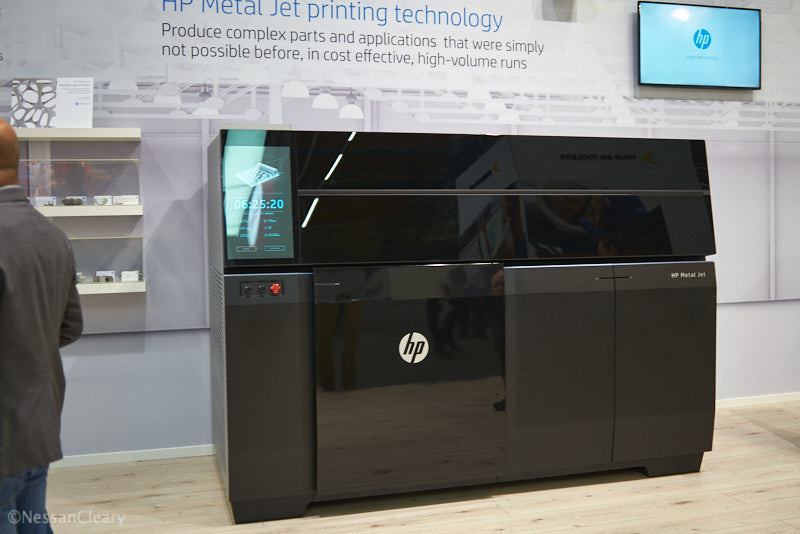
HP showed this Metal Jet 3D printer at Formnext 2019, which is able to produce metal parts.
HPは、このMetal Jet 3DプリンターをFormnext 2019で展示し、金属部品を生産できるようにしました。
4番目の大きな傾向は、クラウドコンピューティングの成長です。インダストリー 4.0については多くの話がありますが、これは産業革命の始まりからメーカーが行ってきた自動化の使用に関するものです。利用可能なツールの問題に過ぎず、現在利用可能な最新のツールはクラウドコンピューティングです。これにより、より多くのデータを収集して分析し、プレスなどの資産を最大限に活用できます。しかし、クラウドコンピューティングにはさらに多くの機能があります。まず、コンピューティングの主要な制限、つまり、ビジネスの運営に必要なITハードウェアを絶えずアップグレードしなければならないという莫大なコストを克服することができます。重労働をクラウドに移行することで、誰もが ITコストを削減できます。90年代にシンコンピューティングと呼ばれていたもので、新しいコンセプトではありませんが、インターネットを介してすべてを接続することで、リモート診断やデータ分析などの新しい可能性が開かれました。ほとんどの人は、IT、ワークフロー、またはデータの制御を失うことについて懐疑的になり、すべての ITインフラストラクチャを実行するよりも安価な代替手段として、通常の ISPホスティング料金を受け入れようとしています。
The fourth big trend is the growth of cloud computing. There’s much talk about Industry 4.0 but this is just about using automation, which manufacturers have been doing since the start of the industrial revolution. It’s just a question of the tools available, and right now the newest tool available is cloud computing. This will allow us to collect and to analyse much more data, to squeeze the most out of assets, such as presses. But there’s much more to cloud computing. For a start, it also allows us to overcome the major limitation in computing, namely the huge cost in having to constantly upgrade the IT hardware needed to run our businesses. Shifting the heavy lifting to the cloud will help everyone cut their IT costs. It’s not really a new concept – back in the 90s we called it thin computing – but connecting everything through the Internet has opened up new possibilities such as remote diagnostics and data analysis. It seems to me that most people have now got over any scepticism about losing control of their IT, or their workflow, or their data, and are willing to accept regular ISP hosting fees as a cheaper alternative to running all their own IT infrastructure.
これにより、印刷機の販売方法に対する認識が変わり、ハードウェアや印刷品質を重視せず、データ分析やハードウェアから最大限の生産性を引き出す方法を重視しています。今のところ、これは、ハイデルベルクなどの企業が新しいデータサービスを開発していることを意味しますが、印刷業者が最終的に自社のデータを購入していることに気付くことは避けられません。
This in turn is changing the perception of how presses are sold, with less emphasis on the hardware and the print quality it can produce, more on the data analysis and how to squeeze the maximum productivity out of the hardware. For now, this means that companies such as Heidelberg are developing new data services but it’s inevitable that printers will eventually realise that its their own data they’re paying for.
全体像はこれで終わりですが、2020年はどうでしょうか?昨年の話を振り返ってみると、ショーでの製品の発売と、Fespaに間に合うように発表された新しいワイドフォーマットマシンと、Label Expoに向けて多くのレーベルプレスが登場するという密接な相関関係に驚きました。今年は大規模な見本市、特に Drupaが圧倒的に多くなるため、今年の前半には、特にシングルパスインクジェットプレスを中心に新製品の発表が殺到すると予想され、そのいくつかは今年の後半に発売されるでしょう。京セラのプリントヘッドを使用しているベンダーは、昨年発表された新しいヘッドを採用することを期待しているため、多数の新しいプレス発表が行われる可能性があります。
So much for the bigger picture, but what about 2020? Looking back over last years stories I was struck by the close correlation between product launches at shows, with new wide format machines announced in time for Fespa, and plenty of label presses appearing in the run up to Label Expo. This year is going to be dominated by large trade shows, especially Drupa, so we can reasonably expect the first half of this year to be crowded with new product announcements, particularly around single pass inkjet presses, some of which might even be available by the second half of the year. I’d expect any vendors using Kyocera printheads to adopt the new heads announced last year so we’ll likely see a raft of new press announcements.
ほとんどのベンダーは、これがボリューム、したがって投資の可能性がある場所であると考えているため、多くの新しい印刷機がパッケージング部門をターゲットとすることを合理的に期待できます。また、主にUVは大量に使用するには高価すぎるため、臭気や食品の安全性の課題があるため、ほとんどの新しいインクジェットプレスが水性インクを使用することを期待できます。これは、インクジェット段ボール印刷機を開発している Xeikonなどのほとんどのベンダーが、水性インクの最も簡単なターゲットである紙ベースのパッケージへの印刷に集中することを意味します。しかし、Drupaにとって最も興味深い質問の1つは、水性インクジェットを柔軟なフィルムに印刷する領域でどのような進展があったかを確認することです。
We can reasonably expect that many of the new presses will target the packaging sector, as most vendors believe that this is where the volume, and hence likely investment, will come from. We can also expect that most new inkjet presses will use water-based inks, mainly because UV is too expensive for truly high volume use, and because of its issues with odour and food safety. This in turn means that most vendors, such as Xeikon, which is developing an inkjet corrugated press, will focus on printing to paper-based packaging, which is the easiest target for water-based inks. But one of the most interesting question for Drupa will be to see what progress has been made with printing water-based inkjet to flexible films.
また、ソフトウェア全般、特にワークフローは近年無視されてきていると感じています。あまりにも長い間、主にソフトウェアの異なる部分間の接続性を確保する必要があるため、比較的少数の大規模な開発者がワークフローソフトウェアを支配してきました。しかし、今ではかなり多くのソフトウェアベンダーがよりオープンなアプローチを取っているので、プリンターが自分に合ったワークフローを開発することがますます容易になっています。この面では、カナダのデベロッパー Tilia Labsに注目することをお勧めします。この会社は、クラウドコンピューティングを使用してワークフローの自動化をまったく新しいレベルに引き上げており、Drupaで何が表示されるかを見るのは興味深いはずです。
I also feel that software in general, and workflow in particular, has been neglected in recent years. For too long workflow software has been dominated by a relatively small number of larger developers, mainly because of the need to ensure connectivity between the different pieces of software. But I see quite a few software vendors now taking a more open approach so that it’s becoming increasingly easier for printers to develop a workflow that works for them. On this front, I’d recommend keeping an eye on the Canadian developer Tilia Labs. This company is using cloud computing to take workflow automation to a whole new level and it should be interesting to see what it shows at Drupa.
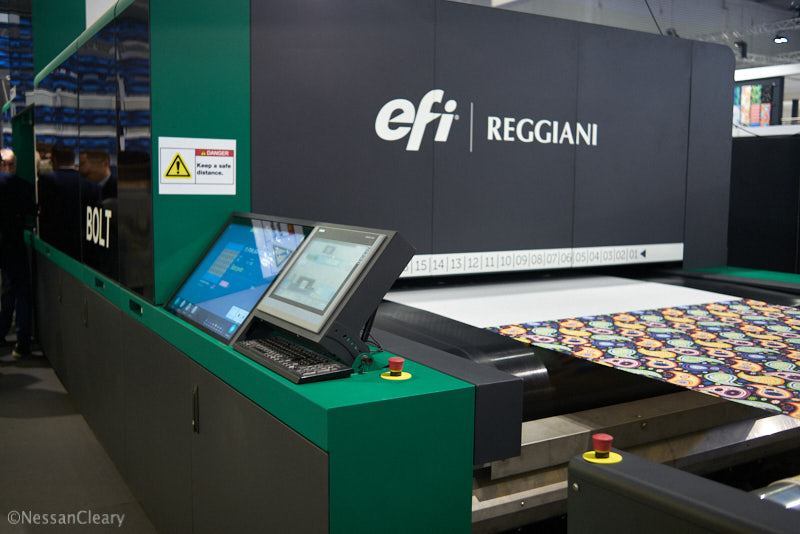
The EFI Reggiani Bolt is a single pass textile printer, seeh here at Itma 2019.
EFI Reggiani Boltはシングルパステキスタイルプリンターです。こちらはItma 2019です。
私は、環境問題がこの 10年間で私たちの生活に大きな役割を果たすと予想しています。実際、人類が環境にもたらした混乱と、気候変動を通じて私たち全員が現在直面している危険性を考えると。私たち全員が私たちが住んでいる岩(地球)についてもっと考えてくれることを願っています。多くのベンダーは、デジタル印刷の環境上の利点を大いに活用します。これには、デジタルが無駄を減らして、より短く、よりターゲットを絞った実行を可能にしているという事実があります。また、一部の分野、特に繊維製品では、水質汚染を減らすためにインクジェット印刷の普及が不可欠であると主張することができます。しかし、これに夢中になる前に、ファストファッションは本質的に寿命の短い衣類の生産増加を意味し、それが独自の環境問題をもたらすことを覚えておく必要があります。リサイクルを改善することでこの問題の一部を軽減できます。印刷業界は、印刷物をリサイクルするためにより積極的なアプローチをとる必要があると思います。
I fully expect that environmental concerns will play a bigger role in our lives in this decade. Indeed, given the mess that mankind has made of the environment and the dangers that we all now face through climate change. I would hope that we would all think more about the rock that we are living on. Many vendors will make much out of the environmental benefits of digital printing. There is some truth in this, in that digital has allowed shorter, more targeted runs, with less waste. And in some sectors, particularly textiles, we could argue that the widespread adoption of inkjet printing is essential to reduce water pollution. But before we get carried away with this, we should also remember that fast fashion inherently means increased production of garments with short life spans, which will bring its own environmental problems. We can mitigate some of this with better recycling, and I suspect that the printing industry is going to have to take a much more proactive approach to recycling the things we print.
EUが非リサイクルプラスチックへの課税計画を復活させていることを FTが報告していることは注目に値します。これは、包装市場およびおそらくワイドフォーマット印刷にも大きな影響を及ぼす可能性があります。EUにとっては、プラスチック廃棄物の量を減らし、Brexitによる予算不足を埋めるのに役立つため、これは双方にとってメリットがあります。これはまた、実際にプラスチックをリサイクルする方法についてのさらなる議論につながるはずです。なぜなら、それを回収してリサイクル施設に送る効率的な手段が無ければ、リサイクル可能なプラスチックは実際には何も役に立たないからです。これは、紙ベースのコーヒーカップを弱体化させたのと同じ問題です。それは理論上はリサイクルできますが、実際にはそうではありません。
It’s worth noting that the FT is reporting that the EU is reviving its plans to tax non-recyclable plastic, which is likely to have a significant impact on the packaging market and possibly also wide format printing. This is a win-win for the EU as it will help to reduce the amount of plastic waste and fill the gap in its budget caused by Brexit. This is also bound to lead to further debate about how we actually recycle plastic because, let’s face it, recyclable plastic isn’t actually doing anyone any good if we don’t also have an efficient means of collecting it and sending it to a recycling facility. This is the same problem that has undermined paper-based coffee cups, which can in theory be recycled, but usually aren’t.

Lion in Trafalgar Square, London.
ロンドンのトラファルガー広場のライオン。
そして、Brexitがあります。ここ英国では、首相を選出したばかりですが、その人物は多くのビジネスリーダーが Brexitについてナーバスになっていると言われたとき、「ビジネスなんてクソくらえ」と言ったと報告されています。このような態度は、イギリス経済にとってはよい前兆ではありません。
And then there is Brexit. Here in the UK we have just elected a prime minister who, when told that many business leaders were justifiably nervous about Brexit, is reported to have said “Fuck business”. This sort of attitude hardly bodes well for the British economy.
私の知る限り、地元の顧客にサービスを提供している多くのプリンターは、Brexitを曖昧に、または公然と支持していますが、国際的に販売しなければならないプレス、ソフトウェア、コンポーネントのベンダーは一般的に Brexitに反対しています。それにもかかわらず、「トーリー(保守党のこと)は、ジョンソンが課していると感じている Brexit取引を押し進めるプラットフォームで明確な過半数を獲得しており、英国がEUを去ることを受け入れなければならない」というのが選挙の結果です。まあいずれにせよ、イングランドとウェールズはそうでしょう。ですが、スコットランドと北アイルランドが英国の一部として存続することを望むかどうかはまだ分からず、今後数年間は、それらをUKに結びつける行為をキャンセルする需要が高まっていくことでしょう。
As far as I can see, many printers serving local customers are ambivalent or openly supportive of Brexit, whereas the press, software and component vendors, who have to sell internationally, are generally opposed to Brexit. Nonetheless, the electorate has spoken, the Tories have won a clear majority on a platform of pushing through whatever Brexit deal Johnson feels like imposing and we have to accept that Britain is leaving the EU. Well, England and Wales anyway; it remains to be seen if Scotland and Northern Ireland will want to continue as part of the United Kingdom and the next few years could well see a growing demand to revoke the relevant acts of union that bind them.
一方、自由世界の残りの部分は非常に良好な状態にあり、世界で最も強力な指導者がスウェーデンのティーンエイジャーに嫌がらせをする時間を日常的に見つけることができます。トゥーンバーグの分析が注目されることを除けば、ほとんどおかしいでしょう。科学者の意見を聞き、環境を保護するために行動を修正する必要があるだけでなく、私たちはこれを行うことができないリーダーによって失敗しています。
Meanwhile the rest of the free world is in such good shape that the most powerful leader in the world can routinely find time to harass a Swedish teenager. It would almost be funny, except that Thunberg’s analysis is spot on – not only do we need to listen to our scientists and modify our behaviour to protect our environment – but we are being failed by our leaders inability to do this.
トランプが弾劾を切り抜けると仮定すると、アメリカ人は、自分が嘘つきであると証明した人、おそらく腐敗している人、人種差別主義者である可能性が高い人を再選するかどうかを選択する必要があります。彼の前任者が達成したすべてをバラバラにし、専門家に相談することなく気まぐれに意思決定を下し、伝統的な同盟国を日常的に侮辱しながらアメリカの敵を解散することで戦争を危険にさらす大統領・・・そんな人を再選するんでしょうかね。そしてまた英国では、真実性の概念も知らず、彼自身の汚職罪に直面していて、父親となったすべての子供を数えることができないリーダーを選出しましたわけです。西洋の民主主義の概念は、植民地主義と奴隷制に甘えている部分があったにも関わらず、真実や品位などの価値に基づいていましたが、そのような指導者を選び続けると、自分のアイデンティティを失う危険があります。
Assuming that Trump survives his impeachment, as seems likely, Americans will have to choose whether or not to re-elect a man who has proven himself to be a liar, who is probably corrupt, quite likely a racist and who’s major policy aim is to unravel everything that his predecessor achieved, a president who makes decisions on a whim without consulting experts and is willing to risk war by winding up America’s enemies whilst routinely insulting its traditional allies. Then again, in Britain, we’ve just elected a leader who is also a stranger to the concept of truthfulness, is facing his own corruption charges and still can’t count all the children he has fathered. The concept of Western democracy was based on values such as truth and decency, which have sort of prevailed despite our indulgence in colonialism and slavery, and yet we risk losing our own identities if we continue to elect such leaders.
しかし、これは印刷が本当に違いを生むことができるひとつの領域です。印刷された言葉には、電子通信を超えた重力がまだあることを示す多くの研究があります。同時に、Twitter、Facebook、およびソーシャルメディア全般が、すべて偽情報キャンペーンの実施に使用される傾向が非常に高いという証拠が増えています。さらに心配なことに、今週末、Cambridge Analyticaがデータマイニングとソーシャルメディアを組み合わせて、複数の国でダーティートリックキャンペーンを実施し、民主主義と自己決定の概念を弱体化させないビジネスを展開した方法のさらなる証拠が現れました。そのため、ソーシャルメディア企業は税金の抜け穴を巧みに操作する能力が高いことが証明されていますが、規制当局の支援がなければこの問題に対抗できるとは思えません。
But this is one area that print really can make a difference. There have been plenty of studies that show that the printed word still holds a gravitas that is beyond electronic communications. At the same time, there is growing evidence that Twitter, Facebook and social media in general are all highly prone to being used to run disinformation campaigns. More worryingly, further evidence has emerged just this weekend of the way that Cambridge Analytica combined data mining with social media to run dirty tricks campaigns in multiple countries, making a business out of undermining the very concept of democracy and self-determination. So while the social media companies have proven highly skilled at manipulating tax loopholes, I don’t think they can be trusted to combat this problem without regulatory help.
一方、印刷は非常に高価です。誰かが何かを苦労して印刷した場合、それは何らかの価値を持たなければならないという認識があります。少なくとも、誰かがデザインを監督し、テキストを校正し、印刷で締め括る必要があることを、我々は本能的に解っています。これは、パッケージングから新聞まですべてに当てはまります。パッケージング内の製品についての正しい情報が印刷されていること、または新聞の情報が正しいことを保証するのは、この監視またはプロセス制御です。ですから、プロセス管理の改善に向けて努力することは、カラー管理のような実用的なものであれ、ジャーナリズムのようなより難解なものであれ、今年を始めるにあたってのよい決意であると思うのです。
Print, on the other hand, is reassuringly expensive. There is a perception that if somebody has taken the trouble to print something then it must have some value. At the very least, we instinctively know that somebody had to oversee the design, proofread the text and sign off for the printing. This is true for everything from packaging to newspapers, and it is this oversight, or process control, that guarantees the contents within, be that products within packaging or information in newspaper. So I’d suggest that striving for better process control might be a good resolution to start of this year, whether that’s something practical like colour management, or more esoteric, like journalism.
ここで皮肉なのは、これをデジタルプラットフォームで公開していることですが、Osgood Fielding IIIを引用すると「完璧な人はいない」・・・ということですかね(笑)。明けましておめでとうございます。(■ 大野註:Osgood Fielding IIIとは、映画「お熱いのがお好き」の登場人物の大富豪)
I know the irony here is that I’m publishing this on a digital platform but, to quote Osgood Fielding III, nobody’s perfect. Happy New Year.



